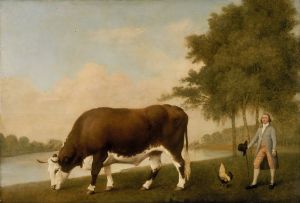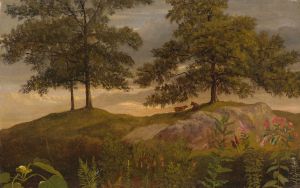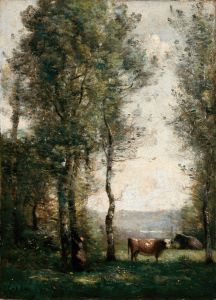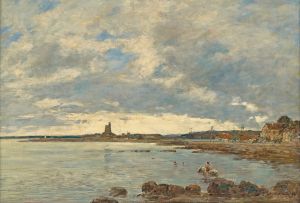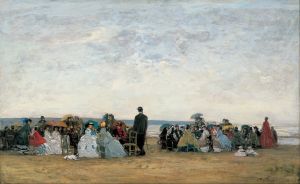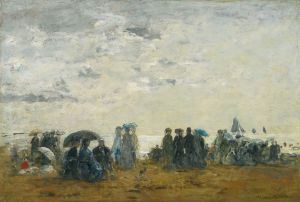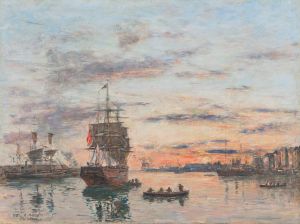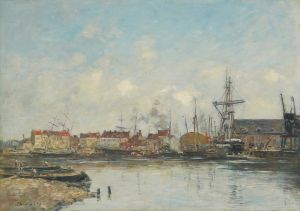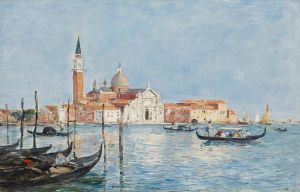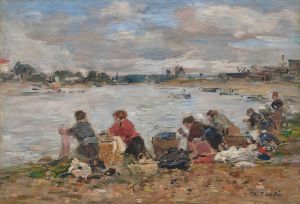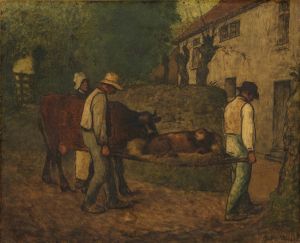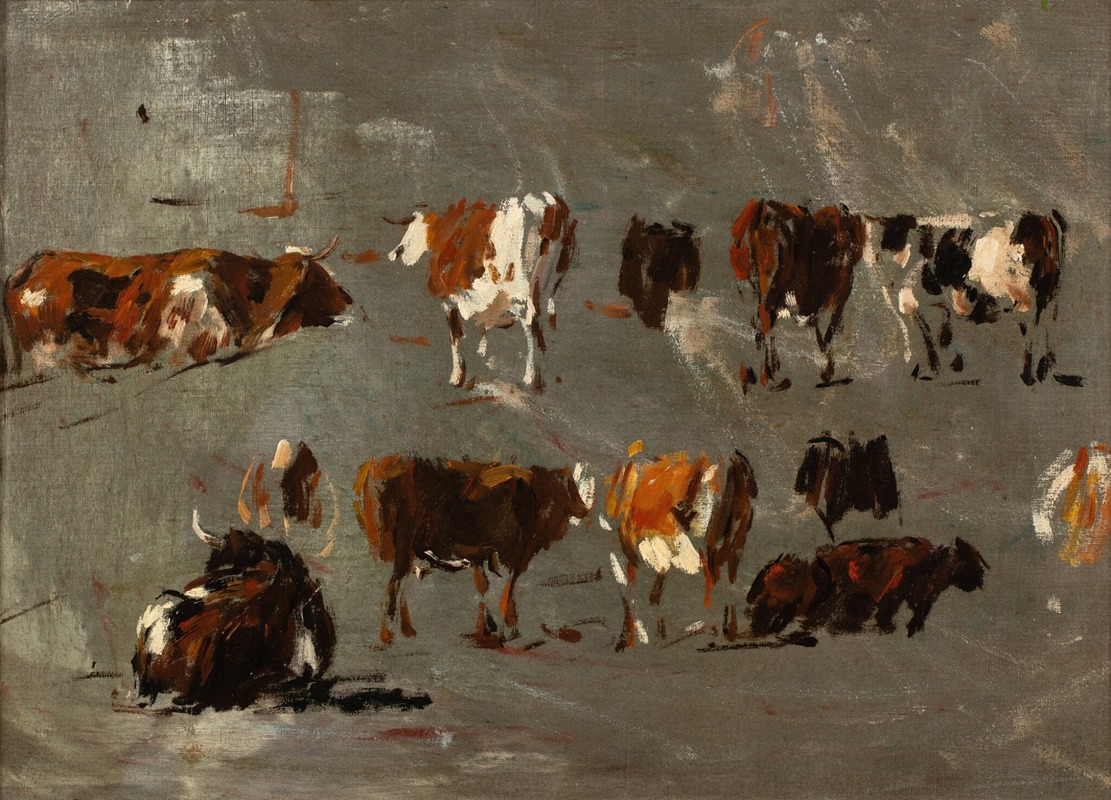
Étude de vaches
A hand-painted replica of Eugène Boudin’s masterpiece Étude de vaches, meticulously crafted by professional artists to capture the true essence of the original. Each piece is created with museum-quality canvas and rare mineral pigments, carefully painted by experienced artists with delicate brushstrokes and rich, layered colors to perfectly recreate the texture of the original artwork. Unlike machine-printed reproductions, this hand-painted version brings the painting to life, infused with the artist’s emotions and skill in every stroke. Whether for personal collection or home decoration, it instantly elevates the artistic atmosphere of any space.
Étude de vaches (Study of Cows) is a painting by the French artist Eugène Boudin, who is widely recognized as one of the precursors of the Impressionist movement. Boudin was born on July 12, 1824, in Honfleur, France, and he developed a keen interest in capturing the natural beauty of landscapes and coastal scenes. His work often depicted the skies, beaches, and rural life of Normandy, where he spent much of his life.
Étude de vaches is a fine example of Boudin's ability to capture the essence of rural life with a sense of immediacy and naturalism. The painting features a group of cows grazing in a pastoral setting, showcasing Boudin's skill in rendering animals and his attention to the subtleties of light and atmosphere. The composition is simple yet effective, with the cows positioned in a way that leads the viewer's eye through the scene, creating a sense of depth and tranquility.
Boudin's technique in Étude de vaches reflects his mastery of plein air painting, a method of painting outdoors that allows artists to capture the changing effects of light and weather directly from nature. This approach was revolutionary at the time and laid the groundwork for the Impressionist movement, which would emerge in the latter half of the 19th century. Boudin's loose brushwork and emphasis on natural light in this painting are characteristic of his style and demonstrate his influence on later Impressionist painters, including Claude Monet, who was a close friend and admirer of Boudin.
The palette of Étude de vaches is dominated by earthy tones and soft greens, which enhance the naturalistic feel of the scene. Boudin's use of color is subtle yet effective, creating a harmonious balance that evokes the serene atmosphere of the countryside. The sky, a recurring element in Boudin's work, is depicted with delicate gradations of blue and white, suggesting a calm, clear day.
Throughout his career, Eugène Boudin remained dedicated to capturing the beauty of the natural world, and Étude de vaches is a testament to his enduring legacy as a pioneer of modern landscape painting. His work continues to be celebrated for its innovative approach and its influence on the development of Impressionism.
Boudin's contributions to art were recognized during his lifetime, and he exhibited regularly at the Paris Salon. In 1892, he was awarded the prestigious Légion d'honneur, France's highest order of merit for military and civil achievements. Today, his works are held in major museums and collections around the world, including the Musée d'Orsay in Paris and the National Gallery of Art in Washington, D.C.
Étude de vaches remains an important piece within Boudin's oeuvre, exemplifying his ability to capture the quiet beauty of rural life with a sense of immediacy and authenticity. Through his innovative techniques and dedication to plein air painting, Boudin has secured his place in art history as a key figure in the transition from traditional landscape painting to the modernist approaches of the Impressionists.





